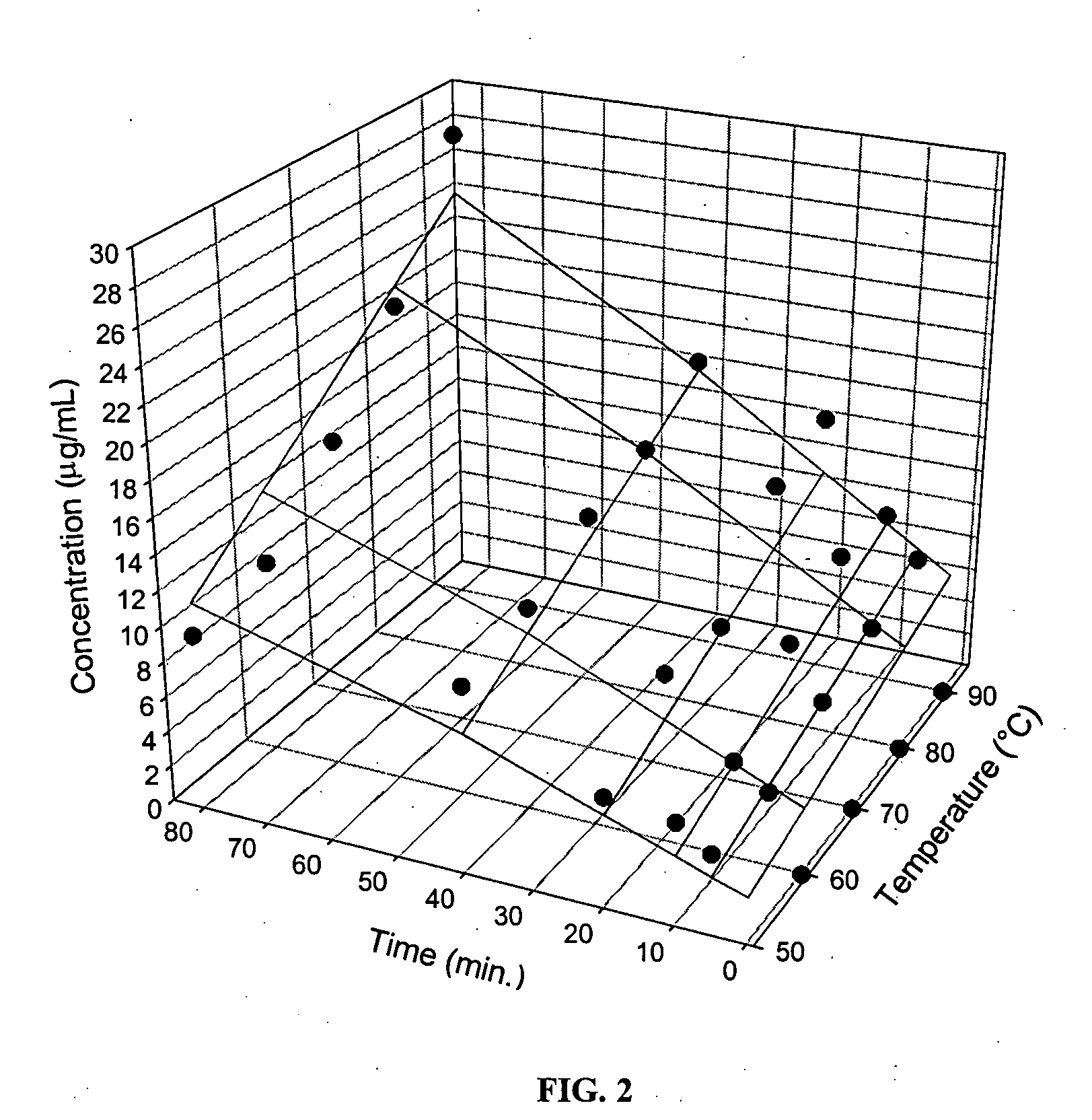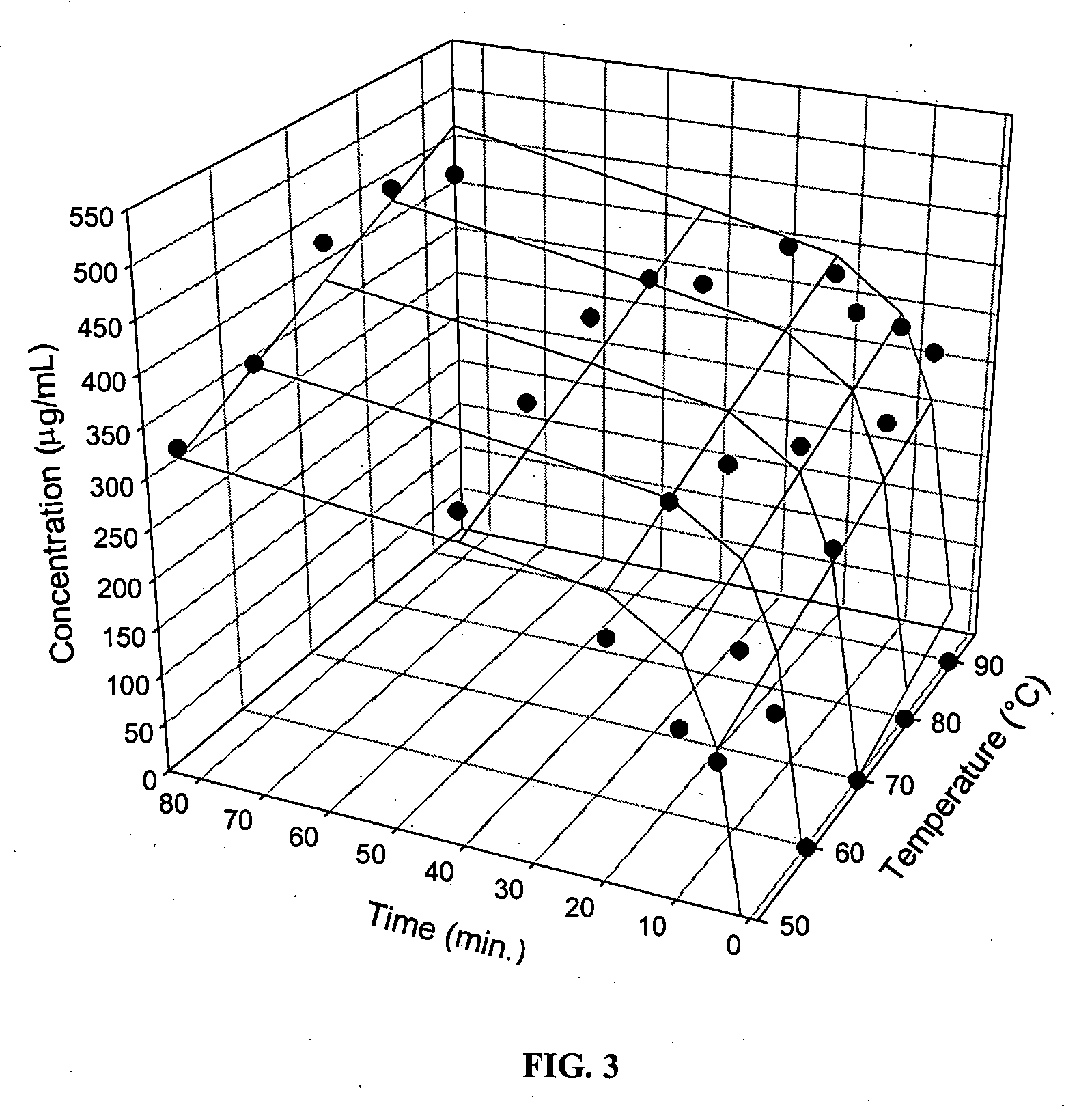Method for selectively and sequentially extracting catechins from plant product
a plant product and catechin technology, applied in the field of selectively and sequentially extracting catechins from plant products, can solve the problems of not being easily transposable to the industrial scale, and little basic scientific data on the technology of brewing green tea
- Summary
- Abstract
- Description
- Claims
- Application Information
AI Technical Summary
Benefits of technology
Problems solved by technology
Method used
Image
Examples
example 1
Determination of Catechin Solubilisation as a Function of the Brewing Temperature and Time
Material
[0029] The green tea was a non-biological Japanese green tea (lot 12423TKA) obtained from local retailer (La Giroflée, Quebec City, QC, Canada). The green tea was stored at room temperature in a dark and dry space.
Catechin and Caffein Standards
[0030] (+)-catechin HPLC grade standard was obtained from Indofine (Hillsborough, N.J., U.S.A.) while (−)-epicatechin, (−)-epigallocatechin, (−)-epicatechin gallate, (−)-epigallocatechin gallate, (−)-gallocatechin gallate and caffein standards were from Sigma Company (Saint-Louis, Mo., U.S.A.).
Method
Protocol
[0031] 20 g of green tea were brewed in 1000 mL of double-distilled water to performe catechin solubilization, in accordance with the standards known in the art of 1 g of tea per 50 mL of water. Brews were performed in a water bath at five (5) different temperatures, namely 50, 60, 70, 80 and 90° C. Ten (10) mL samples wer...
example 2
Determination of the Catechin Content of a Sequential Brewing Process
Method
Protocol
[0052] 20 g of green tea were brewed in 1000 mL of double-distilled water to perform catechin solubilization. A 1:50 tea:water ratio was respected as mentioned in the art. The first brewing step was carried out at 50° C. for 10 minutes in a thermostated water-bath. The green tea was removed from the solution and gently squeezed to extract as much water possible. The green tea was then soaked for 10 minutes, for the second brewing step, in 1000 mL of double-distilled water preheated at 80° C. The two-step extraction procedure was repeated three times. After each 10-minutes brewing step the solution was collected. 1.5 mL-samples of both solutions were used for HPLC catechin concentration determination, while the remaining solutions were freeze-dried for 24 hours at room temperature (Model Freezone 4.5, Labconco, Kansas City, Mich., U.S.A.). The lyophilized catechin extracts were stored at 4° C. bef...
PUM
| Property | Measurement | Unit |
|---|---|---|
| Temperature | aaaaa | aaaaa |
| Temperature | aaaaa | aaaaa |
| Temperature | aaaaa | aaaaa |
Abstract
Description
Claims
Application Information
 Login to View More
Login to View More - R&D
- Intellectual Property
- Life Sciences
- Materials
- Tech Scout
- Unparalleled Data Quality
- Higher Quality Content
- 60% Fewer Hallucinations
Browse by: Latest US Patents, China's latest patents, Technical Efficacy Thesaurus, Application Domain, Technology Topic, Popular Technical Reports.
© 2025 PatSnap. All rights reserved.Legal|Privacy policy|Modern Slavery Act Transparency Statement|Sitemap|About US| Contact US: help@patsnap.com



